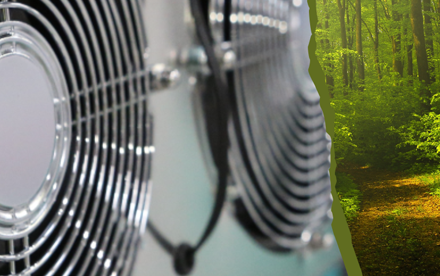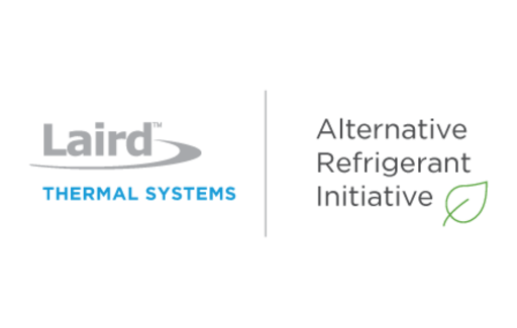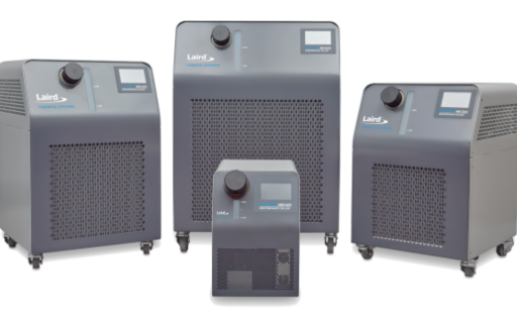The European Green Deal is an ambitious initiative by the European Union (EU) aimed at making the region more sustainable and climate neutral. Its primary goal is to transform the EU into a green and circular economy, reducing greenhouse gas emissions and enhancing environmental sustainability. The key objectives include achieving carbon neutrality by 2050.
The 2021 legislation, part of Regulation (EU) 2021/1119 (the European Climate Law), introduces a paradigm shift by implementing stringent measures to address high Global Warming Potential (GWP) chemicals, diverging significantly from prior frameworks. This departure involves enhanced regulations, stricter controls, and a more proactive approach to mitigate the environmental impact of GWP chemicals, setting a new standard for climate legislation The Regulation explicitly aims to achieve net-zero greenhouse gas emissions for EU Member States by 2050. It introduces binding targets for climate neutrality, a comprehensive framework for emission reduction, and Union-wide targets for specific years (2030 and 2040). (see full timeline here)
The following is a quick background of European Climate Laws, as well as recent updates to legislation impacting the use of high GWP chemicals such as fluorinated greenhouse gases (F-gases) in refrigeration applications.
What are F-gases?
The following is a quick background of European Climate Laws, as well as recent updates to legislation impacting the use of high GWP chemicals such as fluorinated greenhouse gases (F-gases) in refrigeration applications.
EU Climate Goal
Regulation (EU) 2021/1119 establishes a binding net greenhouse gas (GHG) reduction target of at least 55% by 2030 and EU climate neutrality by 2050. Achieving these objectives requires reinforcing all instruments relevant to the decarbonization of the EU’s economy. The EU F-gas Regulation is a crucial instrument for lowering GHG emissions.
The EU F-gas Regulation
Regulation (EU) No 517/2014 on F-gases was adopted to reverse the increase in F-gas emissions, especially by Hydrofluorocarbons (HFCs), which occurred based on the phase out of HCFCs and related substances under the 1987 Montreal Protocol on Substances that Deplete the Ozone Layer. Implementing the Kigali Amendment to the Monreal Protocol into EU legislation, the main goal of the F-gas Regulation was the establishment of an ‘EU HFC phase-down’, namely a quota system to implement a gradual reduction schedule of the amount of HFCs that market actors may place on the EU market every year.
The F-gas policy has the following specific objectives:
- Discourage the future use of F-gases and encourage the use of alternative substances or technologies without compromising safety, functionality, and energy efficiency.
- Ensure compliance with protocols and obligations related to HFC use.
- Prevent leaks from equipment and proper end-of-life treatment of F-gases.
- Facilitate enhanced implementation and enforcement on matters of illegal trade, the functioning of the quota system and the training needs on F-gas alternatives.
- Improve monitoring and reporting to fill existing gaps and improve process and data quality for compliance.
- Improve clarity and internal coherence to support better implementation and understanding of the rules.
- Enhance sustainable growth, stimulate innovation, and develop green technologies by improving market opportunities for alternative technologies and gases with low GWP
Current F-gas Use
Today, F-gas emissions amount to only around 2.5% of the EU’s total GHG emissions. However, that number doubled from 1990 to 2014 in contrast to other GHG emissions that fell.
The implementation of the EU F-gas Regulation has led to a year-on-year decrease in F-gas emissions starting in 2015. Moreover, the EU market supply of HFCs declined by 37% metric tons from 2015 until 2019. There has been a clear shift to the use of alternative chemicals with lower GWP, including natural alternatives such as CO2, ammonia, hydrocarbons, and water. However, the emission savings envisioned by 2030 will not be fully achieved with the current agenda and there is an unused potential to save more emissions.
Revised F-gas Regulation 2024/573
As published on 20th February 2024 in the Official Journal of the EU2), the revised F-gas Regulation (EU) 2024/573 aims to instate a more ambitious HFC reduction scheme starting in 2025 with the target of a complete phase out by 2050. This target will be supported by an accelerated phase-out schedule for F-gases in certain applications, often based on GWP limits for refrigerants. A high impact on laboratory scale cooling equipment can be expected from following prohibition dates of placing on the EU market of respective products and equipment:
- Any self-contained refrigeration equipment, except chillers, that contains fluorinated greenhouse gases with a GWP of 150 or more, except if required to meet safety requirements at the site of operation: 1 January 2025
- Chillers that contain, or whose functioning relies upon:
- fluorinated greenhouse gases with a GWP of 150 or more for chillers up to and including a rated capacity of 12 kW, except if required to meet safety requirements at the site of operation: 1 January 2027
- fluorinated greenhouse gases for chillers up to and including a rated capacity of 12 kW, except if required to meet safety requirements at the site of operation:
1 January 2032
Furthermore, it is important to note that with Regulation 2024/573 any economic operator that imports or exports equipment pre-charged with F-gases to / from European Economic Area, will need to register in the EU F-gas portal to acquire a valid license. By that license, the total amount of F-gases imported or exported, respectively, will be notified by respective custom authorities. Based on these trade controls, Regulation 2024/573 also introduces further obligations to European equipment manufacturers:
- Undertakings with an establishment within the Union shall take all necessary measures to ensure that the export of refrigeration and air-conditioning equipment and of heat pumps, does not violate import restrictions that the importing state has notified under the Montreal Protocol.
- From 12 March 2025 the export of stationary refrigeration as referred to in Annex IV that contain, or whose functioning relies upon, fluorinated greenhouse gases with a GWP of 1 000 or more shall be prohibited.
- From 1 January 2028, import and export of products and equipment containing hydrofluorocarbons or whose functioning relies upon those gases, from and to any State or regional economic integration organization that has not agreed to be bound by the provisions of the Montreal Protocol applicable to those gases, shall be prohibited.
In parallel, a proposal under Annex XV of EU REACH Regulation (EC) 1907/2006 aims to restrict per- and polyfluoroalkyl substances (PFAS), a substance group that F-gases are associated with. The two options have been proposed:
- Option One: full ban of all PFAS with no derogations and a transition period of 18 months
- Option Two: full ban of PFAS with use-specific time-limited derogations which may include refrigerants in laboratory test and measurement equipment.
The final decision and publication of the revised EU REACH Regulation may be expected in 2025. However, an inclusion of F-gases into the legislation is still under discussion, especially since they are excluded from PFAS definitions in other areas of the world like the US.
By addressing F-gases, the EU aims to contribute to global efforts to limit the impact of human activities on the climate and work towards the goals outlined in international agreements like the Montreal Protocol. Thereby, the EU remains loyal to its global forerunner ambitions by outperforming countries like the US and Canada, that limit stepwise from 2025 certain chiller applications to refrigerants with GWP of maximum 700 (US)3) or 750 (Canada)4), respectively.
These legislative measures not only contribute to the global effort to combat climate change but also reshape the future of refrigeration equipment. The emphasis on environmentally friendly alternatives, enhanced energy efficiency, and the stimulation of innovation aligns with the broader goal of fostering sustainable practices. As these Regulations continue to evolve, industries reliant on refrigeration and temperature control are poised to undergo transformative changes, emphasizing technological advances to foster a sustainable future.
References:
- https://www.consilium.europa.eu/en/policies/green-deal/#what
- https://eur-lex.europa.eu/eli/reg/2024/573
- Protecting Our Climate by Reducing Use of HFCs | US EPA
- CEPA Registry - Canada.ca
Related Products:
Laird Thermal System’s Nextreme Chillers use already the more environmentally friendly R513A refrigerant with GWP of 630, however, by supporting the sustainable climate targets our scientists at Laird Thermal Systems focused to develop a new product line using R-290 refrigerant, with an ODP of 0 and GWP of 3, and that is not a fluorinated greenhouse gas.
R290 is a hydrocarbon refrigerant commonly used in air conditioning and refrigeration systems. Although it operates at a higher pressure than R600a, it is a popular choice for larger systems (>1kW) due to its high efficiency and low global warming potential. Chillers using R290 are currently limited to a charge of less than 100g of refrigerant to allow for air freight transport according to IATA Dangerous Goods Regulation, however safety standards like IEC 61010 series or EN 378 allow for higher charges. On the other hand, comparable chillers using R134a refrigerant require up to five times higher refrigerant charges (500g) to achieve similar performance. However, R290 is flammable and can be dangerous to handle if proper precautions are not taken. Therefore, following the manufacturer's instructions and guidelines when using and maintaining equipment utilizing flammable refrigerants is imperative.

Related Products
Stay tuned for updates on thermal management industry regulations, new product releases, and innovative temperature control approaches with
LTS Thermal Solutions Spotlight:


